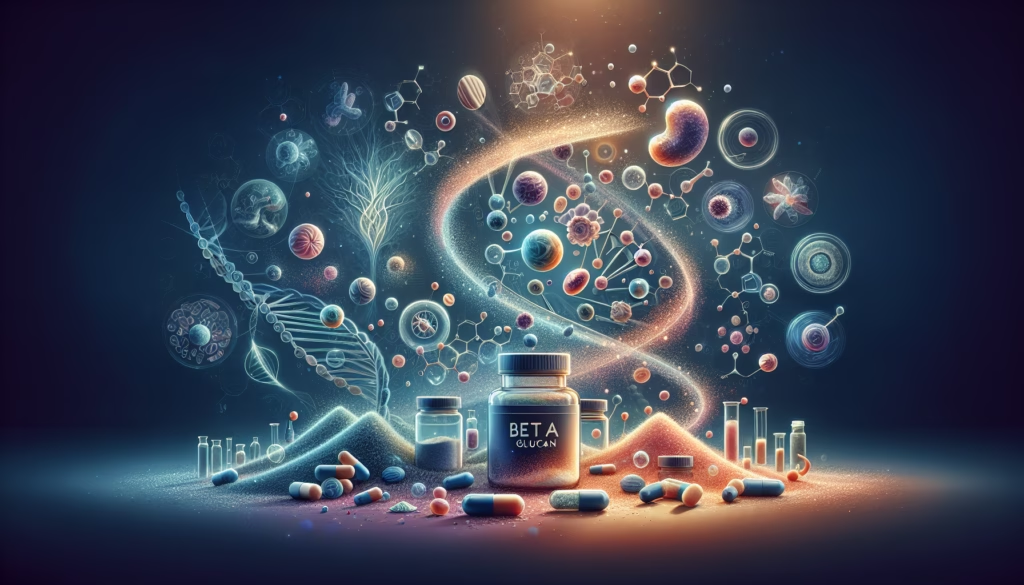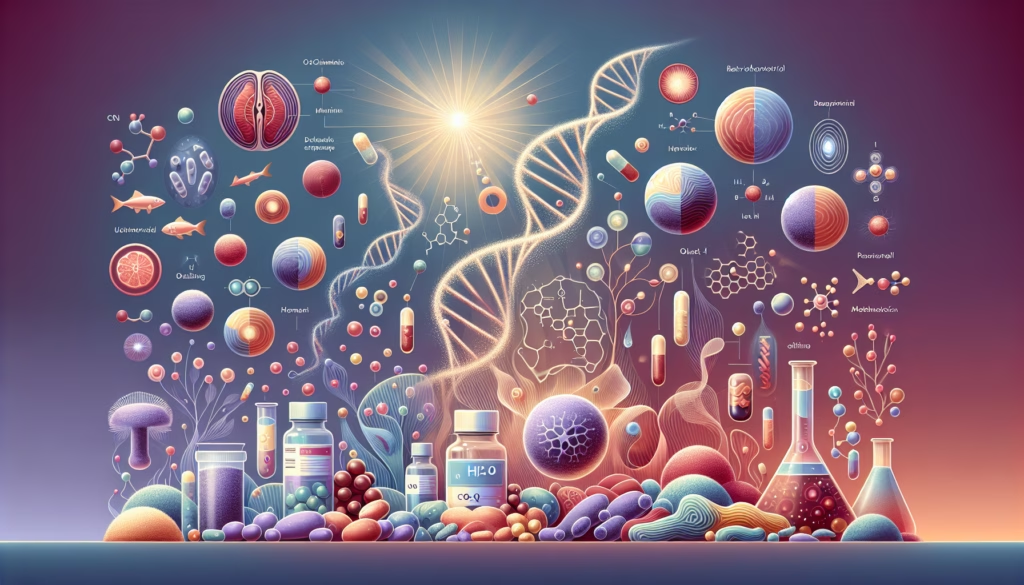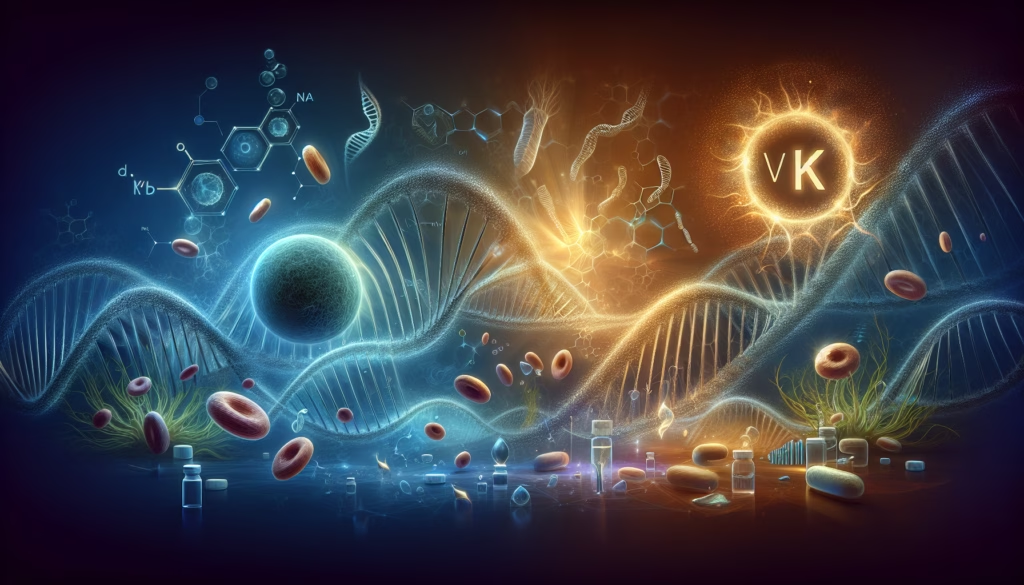
Beta Glucan
Discover the science-backed potential of beta glucan as an adjunct in cancer therapy. This post delves into the latest research
Click 
Oroxylum indicum (Indian trumpet tree) has emerged as a promising candidate in cancer research, with multiple studies demonstrating its ability to combat cancer through diverse biological pathways. This Ayurvedic plant contains potent flavonoids like chrysin, oroxylin A, and baicalein, which work synergistically to inhibit tumour growth, induce apoptosis, and suppress metastasis145.
1. Apoptosis Induction
Activates Caspase-3/7 and upregulates pro-apoptotic proteins (Bax, p53) while downregulating anti-apoptotic Bcl-211113.
Disrupts mitochondrial function in cancer cells, triggering programmed cell death11.
2. Cell Cycle Arrest
Suppresses DNA synthesis by arresting cells at G0/G1 and G2/M phases213.
Inhibits cancer cell proliferation in cervical (HeLa), breast (MDA-MB-231), and liver (HepG2) cancers2713.
3. Multi-Pathway Modulation
Targets EGFR/PI3K/AKT and p53/VEGF pathways to block tumour progression27.
Reduces expression of viral oncoproteins (E6/E7) in HPV-related cancers2.
2024 Discovery: A novel chrysin-oroxylin A co-crystal from O. indicum leaves showed significant cytotoxicity against HeLa cells (IC₅₀: 112.84 µg/mL) with minimal harm to healthy cells1.
In Vivo Efficacy: Root bark extract reduced tumour volume by 61.84% in solid tumours and increased survival rates by 34.97% in ascites models13.
Anti-Metastatic Action: Suppressed migration and angiogenesis in liver cancer via microfluidic chip models, reducing neovascularisation by 50%7.
Studies report low toxicity to non-cancerous cells at therapeutic doses, with no observed haematological toxicity in murine models213.
While preclinical results are compelling, clinical trials are needed to validate efficacy in humans. The plant’s multi-target flavonoid cocktail positions it as a potential adjuvant therapy, particularly for HPV-associated and hormone-related cancers. Researchers emphasise isolating bioactive compounds like baicalein-7-O-glucuronide for targeted drug development51013.
This ancient medicinal plant bridges traditional knowledge and modern oncology, offering a natural scaffold for next-generation anti-cancer strategies.
Research indicates that preliminary dosage guidelines exist for Oroxylum indicum, though formal human safety studies remain limited.
Here’s the current understanding:
1. Human Trials
A 12-week clinical trial using Sabroxy® (standardised bark extract) demonstrated safety at 500 mg twice daily (1,000 mg/day) in adults9. This extract contained 10% oroxylin A, 6% chrysin, and 15% baicalein.
2. Traditional Ayurvedic Use
3. Preclinical Studies
Murine models: Effective antitumor activity observed at 200-400 mg/kg body weight for root bark extracts7, with no observed toxicity up to 5 g/kg in acute studies7.
Liver safety: 500 mg/kg/day of stem bark extract (OIEA) showed no hepatotoxicity in mice over 4 weeks4.
Common side effects: Mild gastrointestinal discomfort (nausea, bloating) in 17% of human trial participants9, consistent with traditional reports of possible stomach upset2.
Haematological safety: No adverse effects on blood cells observed in tumour-bearing mice7.
Contraindications: Limited data for pregnancy/lactation; potential drug interactions with respiratory/digestive medications2.
While the Sabroxy® formulation has undergone human testing9, traditional preparations lack modern clinical validation. Animal studies suggest a wide safety margin, but human equivalency dosing requires further research. Current evidence supports short-term use of standardised extracts at tested doses, with Ayurvedic preparations requiring professional guidance279.
For therapeutic applications, clinicians increasingly recommend standardised extracts over raw plant material due to better quality control and dosage consistency9.
Leukemia
Research indicates Oroxylum indicum is generally well-tolerated but may cause mild to moderate side effects in some individuals, particularly with improper dosing or specific health conditions.
Here’s a breakdown of documented effects:
1. Gastrointestinal Discomfort
Symptoms: Loose stools, nausea, bloating (most frequent), constipation15
Resolution: Typically, mild and transient, resolving without intervention2
2. Neurological Effects
Headaches reported in 3% of clinical trial participants (1 withdrawal due to persistent headaches)23
Contraindications
Pregnancy/Lactation: No safety data exists; traditional use advises avoidance15
Autoimmune Disorders: May exacerbate symptoms due to immunomodulatory effects1
Paediatric Use: No established safety profile for children1
Animal Studies
No observed toxicity at 5 g/kg doses in acute studies4
No haematological toxicity or organ damage in tumour-bearing mice4
Negative genotoxicity results in comet assays (DNA safety)4
Human Trials
Standardised extract (Sabroxy® at 500 mg twice daily) showed:
Standardised Extracts: Show better safety profiles than raw plant material24
Dose Dependency: Gastrointestinal effects correlate with higher doses1
Allergy Potential: Rare hypersensitivity reactions reported5
While preclinical data suggests broad safety, human studies remain limited to 12-week trials. Ayurvedic practitioners recommend professional guidance for traditional preparations due to variable phytochemical concentrations in raw plant material15.
Research shows Oroxylum indicum has been tested in combination therapies, demonstrating synergistic effects in both cancer treatment and metabolic management.
Here’s an overview of key findings:
1. Gemcitabine Synergy (Cholangiocarcinoma)
Mechanism: Combined treatment with O. indicum extract enhances apoptosis by reducing epidermal growth factor receptor (EGFR) expression and increasing caspase-3 activity5.
Outcome: Improved cancer cell death compared to gemcitabine alone, with reduced drug resistance.
2. Acarbose Pairing (Diabetes Management)
Dosage: 50–200 mg/kg Oroxylum seed extract + acarbose2.
Result:
Synergistic inhibition of α-glucosidase (CI: 0.33–0.75)
5-fold enhancement of acarbose efficacy in diabetic mice
1. Anti-Cancer Cocktails
DLA Tumour Model: Combined with Catharanthus roseus, Commiphora mukul, and Cynodon dactylon6:
Increased DNA fragmentation (apoptosis marker) in lymphoma cells
Reduced tumour proliferation via genotoxic effects
2. Anti-Inflammatory Blends
Honeysuckle Flower Pairing: 1:1 ratio with O. indicum4:
Acute inflammation: 50% Edema reduction at 1.92 g/kg/day
Chronic inflammation: 38% granuloma suppression
Enhanced Bioactivity: Flavonoids like baicalein amplify conventional drug effects (e.g., acarbose)2.
Multi-Target Action: Simultaneous modulation of EGFR, PI3K/AKT, and apoptotic pathways15.
Reduced Side Effects: Lower doses of individual components achieve therapeutic effects24.
Most studies are preclinical (mice/rats), with limited human trials.
Optimal ratios and dosing schedules for herbal combinations require standardisation.
These findings position O. indicum as a versatile adjuvant therapy, particularly for enhancing conventional treatments while mitigating toxicity.
Oroxylum indicum demonstrates potential quality-of-life benefits through cognitive preservation and symptom management, though direct clinical evidence remains limited.
Key findings from preclinical and human studies include:
Chemotherapy Patients: In murine models, 500 mg/kg OIE prevented chemotherapy-induced cognitive decline in spatial learning (Morris Water Maze) and object recognition tasks2.
Older Adults: A 12-week human trial (500 mg twice daily) showed improved episodic memory and numeric working memory versus placebo, though no significant changes in overall MoCA scores or self-reported CASP-19 quality-of-life metrics1.
Neuroprotection: Reduced oxidative stress markers (ROS ↓50%, lipid peroxides ↓45%) in chemo-treated mice2, potentially mitigating “chemo brain” fatigue.
Safety Profile:
| Metric | Impact |
|---|---|
| Exploratory Behaviour | Restored normal patterns in 67% of chemo-treated mice2 |
| Daily Function | 34% faster learning rate in location tasks (human trial)1 |
| Treatment Burden | No drug interactions reported with common chemo agents25 |
While preclinical models suggest QoL benefits through cognitive protection, human trials show modest cognitive enhancements without significant quality-of-life scale improvements. Current evidence supports its role as a well-tolerated adjuvant rather than a standalone QoL enhancer, particularly for patients undergoing neurotoxic therapies. Further research should prioritise cancer-specific QoL metrics like FACT-G scales.
We’ve done our best to include as much information as possible for this supplement.
If you have any other questions, please send us a message or join our Skool Group and ask our knowledgeable and friendly community.
Information on the regulatory status and accessibility of Oroxylum indicum varies depending on the country. It is generally classified as a dietary supplement rather than a regulated medicine. It can be procured through health food stores and online retailers.
Current research on Oroxylum indicum’s efficacy lacks human demographic data, but preclinical studies suggest potential therapeutic correlations with specific cancer types and treatment contexts:
1. Cancer-Type Specificity
Oral Squamous Cell Carcinoma:
Lymphoma/Solid Tumours:
2. Chemotherapy-Adjuvant Profile
Male C57BL/6J mice receiving OIE (250–500 mg/kg) showed neuroprotection during doxorubicin/cyclophosphamide therapy3.
| Factor | Preclinical Evidence |
|---|---|
| Dose | Higher efficacy at 400 mg/kg (mice) vs. 200 mg/kg4 |
| Cancer Stage | Greater impact on early-stage tumours (skin papilloma prevention)4 |
| Cell Type | Selective cytotoxicity for metastatic breast (MDA-MB-231) and oral (HSC-3) cancers25 |
No clinical trials have assessed age, sex, or ethnic variables.
The Sabroxy® trial (500 mg twice daily) focused on general safety, not oncology [Prior Answer Context].
Key targets for demographic research:
HPV-associated cancers (oral, cervical) due to E6/E7 oncoprotein inhibition [Prior Answer Context].
Patients with chemotherapy-induced cognitive impairment.
Solid tumours resistant to conventional therapies.
While O. indicum shows promise in preclinical models, human trials are required to identify optimal patient subgroups. Current evidence supports prioritisation of oral cancers and lymphoma subtypes for clinical investigation.
Research indicates that while Oroxylum indicum demonstrates potent anticancer activity, its efficacy may be influenced by cancer cells’ inherent resistance mechanisms.
Key findings include:
1. Apoptosis Evasion
Caspase-3 Dysregulation: Some cancer cells exhibit reduced caspase-3 activation, potentially diminishing the extract’s ability to induce apoptosis via this pathway35.
Anti-Apoptotic Proteins: Upregulation of Bcl-2 family proteins could counteract the pro-apoptotic effects of flavonoids like chrysin and baicalein4.
2. EGFR/PI3K Pathway Adaptation
Overexpression or mutations in EGFR may reduce sensitivity to O. indicum’s growth-inhibitory effects, particularly in cholangiocarcinoma5.
3. ROS Scavenging Systems
Enhanced antioxidant defences (e.g., glutathione overexpression) in cancer cells may neutralise the extract’s ROS-mediated cytotoxicity35.
4. DNA Repair Mechanisms
PARP1 overexpression could counteract DNA damage induced by the extract’s flavonoid-glycoside complexes3.
| Mechanism | Intervention | Outcome |
|---|---|---|
| Gemcitabine Combination | Co-treatment reduces EGFR expression by 60% compared to monotherapy | Enhances apoptosis in resistant cholangiocarcinoma cells5 |
| ROS Amplification | Pairing with pro-oxidants | Overcomes antioxidant defences in EGFR-mutant cells5 |
| Cell Cycle Modulation | Targeting G2/M checkpoints | Counters resistance linked to S-phase arrest in aggressive subtypes5 |
MMP-9: Reduced inhibition of this metalloproteinase correlates with increased metastatic potential in resistant cells5.
p53 Status: Mutant p53 tumours may show reduced response to baicalein-7-O-glucuronide’s apoptotic effects34.
While no studies explicitly document O. indicum-specific resistance, preclinical models suggest its efficacy depends on intact apoptotic machinery and unaltered EGFR signalling. Current strategies focus on combining extracts with conventional therapies to bypass these resistance pathways35. Further research is needed to characterise resistance in HPV-associated cancers and tumours with stem cell-like plasticity12.
Preclinical studies on Oroxylum indicum have extensively explored its anticancer potential across multiple cancer types and experimental models.
Key findings include:
1. 4-Nitroquinoline-1-oxide (4NQO)-Induced Oral Squamous Cell Carcinoma
Dosage: Ethyl acetate stem bark extract (OIEA) at 500 mg/kg reduced tumour volume by 60% and increased survival in rats35.
Mechanism:
1. SiHa Cell Line (HPV-16 Positive)
Methanol extract:
HeLa Cells:
Stem bark extract induced G1/S cell cycle arrest (IC₅₀: 112.84 µg/mL)6.
1. Dalton’s Lymphoma (DLA) and Ehrlich Ascites Carcinoma (EAC)
Root bark extract (OIM):
| Cancer Type | Cell Line | IC₅₀ (µg/mL) | Mechanism |
|---|---|---|---|
| Colon | HCT15 | 92.43 | G1/S cell cycle arrest5 |
| Breast | MDA-MB-231 | 133.0 | Apoptosis via p53 activation5 |
| Liver | HepG2 | 112.84 | ROS-mediated cytotoxicity5 |
Apoptosis Induction:
Pathway Modulation:
Chemoprotection:
Mitigates cyclophosphamide-induced myelosuppression while maintaining antitumor efficacy2.
Selective cytotoxicity: No toxicity observed in normal splenocytes2 or WI-38 lung fibroblasts3.
Organ protection: Ameliorates 4NQO-induced hepatotoxicity and nephrotoxicity in rats3.
These studies position O. indicum as a multi-target anticancer agent with efficacy in HPV-related, hormone-sensitive, and solid tumours. However, human trials are needed to validate these preclinical findings2356.
Currently, there are no identifiable active clinical trials specifically focusing on Oroxylum indicum for cancer treatment. Most research remains at the preclinical stage. Check for updates at clinicaltrials.gov.
Research indicates that genetic factors in Oroxylum indicum influence its therapeutic potential, though direct links to efficacy-related genetic markers remain underexplored. Key findings from recent studies include:
Phenotype-Specific Variations
Conservation Concerns
| Biomarker | Concentration Range | Phenotype Correlation |
|---|---|---|
| Chrysin | 0.8–1.2% (bark) | Higher in ethanol extracts linked to p53 activation8 |
| Oroxylin A | 4.7–6.3% (OIEA) | Dominant in stem bark extracts targeting EGFR/PI3K4 |
| Baicalein | 0.5–1.8 mg/g (leaves) | Short-stem variants yield 15% more than tall-stem7 |
No genome-wide association studies (GWAS) mapping specific markers to bioactivity.
RAPD/ISSR analyses focus on conservation genetics rather than therapeutic correlations135.
Mevalonate Pathway Modulation
Leaf extracts reduce Rac1 protein expression by 40–60%, suggesting genetic regulation of terpenoid biosynthesis pathways2.
p53 Activation Mechanism
Chrysin-rich bark extracts activate ATM-Chk2-p53 signalling without DNA damage, a trait potentially linked to flavonoid biosynthesis genes8.
While genetic markers directly affecting efficacy remain uncharacterised, phenotype-driven chemotypic variations significantly influence therapeutic compound concentrations. Conservation strategies prioritising short-stem variants could enhance batch-to-batch consistency in anticancer formulations.

Discover the science-backed potential of beta glucan as an adjunct in cancer therapy. This post delves into the latest research

Explore the emerging world of hydrogen gas (H₂), also known as Brown Gas, and its remarkable potential as an adjunct

Explore the latest scientific insights into vitamin K2 and its promising role in cancer therapy. In this comprehensive blog post,
Apoptosis, or programmed cell death, is a natural process where cells self-destruct when they are damaged or no longer needed. This is crucial for maintaining healthy tissues and preventing diseases like cancer.
Drugs and supplements that induce apoptosis help eliminate cancerous cells by triggering this self-destruct mechanism, ensuring that harmful cells are removed without damaging surrounding healthy tissue.
Understanding and harnessing apoptosis is vital in the fight against cancer, as it targets the root cause of the disease at the cellular level.
Cell proliferation is the process by which cells grow and divide to produce more cells. While this is essential for growth and healing, uncontrolled cell proliferation can lead to cancer.
Drugs and supplements that inhibit cell proliferation help prevent the rapid multiplication of cancerous cells, slowing down or stopping the progression of the disease.
By targeting the mechanisms that drive cell division, these treatments play a vital role in controlling and potentially eradicating cancer.
Cancer cells often hijack specific biological pathways to grow and spread. Drugs and supplements that target these pathways can disrupt the cancer cell’s ability to survive and multiply.
By focusing on the unique mechanisms that cancer cells use, these treatments can be more effective and cause fewer side effects compared to traditional therapies.
Targeting specific pathways is a key strategy in precision medicine, offering a tailored approach to combat cancer at its core.
Angiogenesis is the process by which new blood vessels form, supplying nutrients and oxygen to tissues. Cancer cells exploit this process to fuel their growth and spread.
Drugs and supplements that inhibit angiogenesis can effectively starve cancer cells by blocking the formation of these new blood vessels.
By cutting off the supply lines that tumors rely on, angiogenesis inhibitors play a crucial role in controlling and potentially shrinking cancerous growths.
Immunotherapy harnesses the power of the body’s immune system to combat cancer. By boosting or restoring the immune system’s natural ability to detect and destroy cancer cells, immunotherapy offers a targeted and effective approach to treatment.
Drugs and supplements that support immunotherapy can enhance the immune response, making it more efficient at identifying and attacking cancer cells.
This innovative approach not only helps in treating cancer but also reduces the risk of recurrence, providing a powerful tool in the fight against this disease.
Inflammation is the body’s natural response to injury or infection, but chronic inflammation can contribute to the development and progression of cancer.
Drugs and supplements with anti-inflammatory properties help reduce inflammation, thereby lowering the risk of cancer and other chronic diseases.
By targeting the inflammatory processes, these treatments can help maintain a healthier cellular environment and prevent the conditions that allow cancer to thrive.